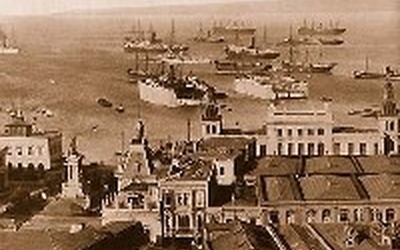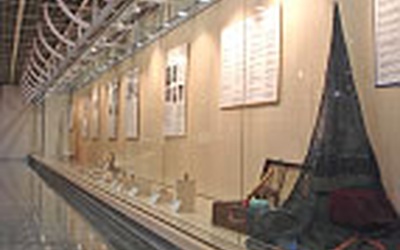COPANI & KNT (2007)

This is a series of reports and presentations from the Joint Convention of COPANI & KNT held July 18 - 21, 2007 in Sao Paulo, Brazil.
Stories from this series
Contemporary Issues Facing Japanese American Communities
Feb. 14, 2008 • Akemi Kikumura Yano
Today, a number of challenges face the Japanese American communities in the United States. At the core of these challenges is the fact that Japanese American communities have become increasingly complex, dispersed and diverse. No longer can we neatly define the Japanese American community by generations – Issei, Nisei, Sansei -- who share common beliefs and historical experiences. Previous definitions of what constitutes a “Japanese American” now seem totally inadequate as one-out-of-three Japanese American is of mixed ethnic or racial …
Current Issues regarding the Brazilian Migration to Japan
Feb. 1, 2008 • Lili Kawamura
In my presentation, I’ll discuss the migration of Japanese-Brazilians to Japan, a process that has led to significant changes in the lives of a growing segment of the Nikkei population in Brazil, as well as in Japan. Since the early ‘90s, a growing number of Brazilians of Japanese ancestry and their families, with Brazilians descendent from other nationalities, have taken part in the “coming and going” Brazil-Japan route, looking for a better living conditions searching for a dream of technological …
Japanese-Brazilians: Past and Present
Jan. 24, 2008 • Célia Sakurai
The history of Japanese immigration to Brazil begins in 1908, with the arrival of the first immigrants officially recognized as such by the Brazilian government. From then on, the road would be long and at times quite convoluted. The first major obstacle was the immigrants’ total ignorance about Brazil. The Japanese knew nothing about the country to where they were moving, except that it was located far away and that there were stories claiming it was easy to get rich …
Chile and Japanese Migration - Part 2
Jan. 17, 2008 • Ariel Takeda
>> Part 1 The Unique Japanese Community in Chile The descriptor, “Japanese community in Chile,” does not appear to be an aphorism that does not correspond with Chilean reality. In Chile there never was, nor has been a “Japanese community” like that found in Peru, Brazil, Mexico, or in other countries where there was official emigration. The opportunities that these Japanese emigrants found in Chile did not allow for the formation of a Japanese “conglomerate” that could achieve cohesion and …
Chile and Japanese Migration – Part 1
Jan. 16, 2008 • Ariel Takeda
Introduction Japan gave impetus to begin migration when it ended the “sakoku” of three centuries, achieved rapprochement with other nations through the signing of Treaties of Friendship and Trade (Japan had signed such a treaty with Chile in 1897), and encouraged the “dekasegi” in order to alleviate, in part, the high social drama with which the bulk of the population lived. Under direct government auspices, thousands of families responded to the call and dispersed throughout the world in search of …
Early Japanese Immigrants: A Historical Look
Dec. 21, 2007 • Célia Abe Oi
As we approach the celebration of the Centenary of Japanese Immigration to Brazil, on June 11, the Museum of the History of Japanese Immigration to Brazil launched the special exhibit, “The Precursor Japanese Immigrants: A Historical Look at the pre-Kasato-Maru Period”. Held on the museum’s 9th floor, the exhibit focused on three characters that, before the official arrival of the first group of immigrants (brought aboard the Kasato-Maru and sponsored by Ryo Mizumo), were already in – or had ties …















